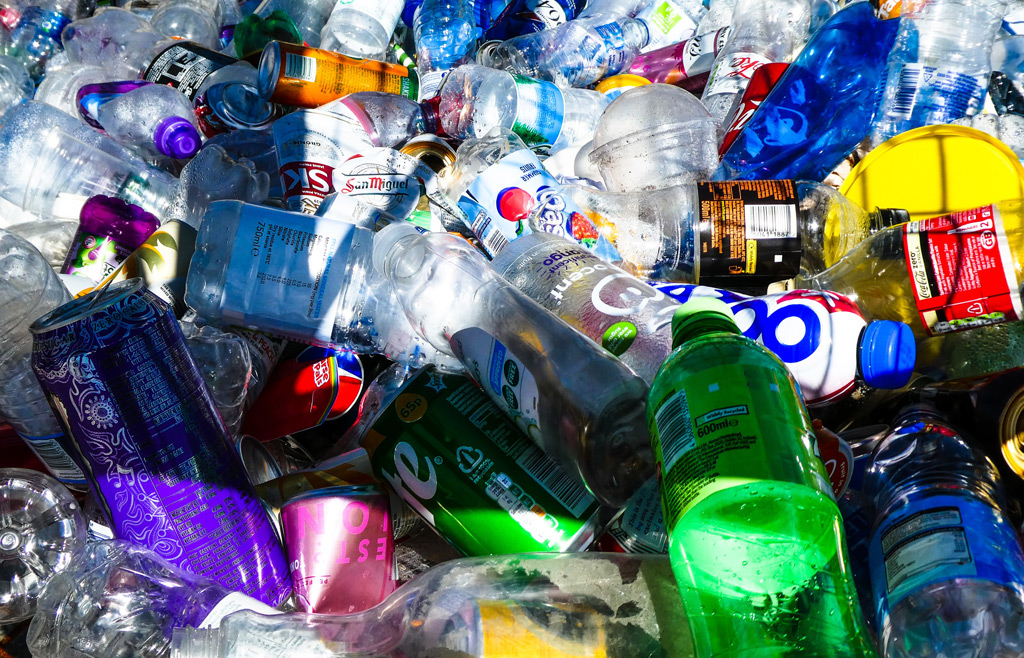
Despite our best efforts, recycling can get complicated. Recyclers can differ wildly in their quality and contamination standards, in the types of materials they accept, and even in their transparency about recycling practices in general. These issues won’t disappear with consumer education alone; instead, they reflect underlying struggles that the recycling industry faces today.
Even TerraCycle, a recycling company whose services I have helped implement in Fairfield, has come under scrutiny lately. Bloomberg Green published an exposé on the company last October that raised some important questions about TerraCycle and its recycling partners. Let’s look into some issues around recycling and what role the industry should play in the movement towards sustainability.
Issues with Recyclability
Prior to 2018, nearly 70 percent of the world’s plastic waste went to China for recycling (NPR, 2019). Due to a large influx of contaminated items, China put an end to most of these imports, and several countries did not have the domestic recycling infrastructure to adapt. Five years have passed since China’s policy change, and we are still facing consequences in the U.S. as our recycling industry struggles to keep up. Despite these constraints, the major challenges facing recycling have not been properly represented to the public, perhaps leading to a false impression of recycling as a fix-all solution rather than a measure of last resort.
Contamination is one primary issue. In a 2018 New York Times interview, Waste Management (WM) executive Brent Bell estimated that one quarter of recycling picked up by WM is sent to landfills because of contamination. Other reasons recycling can end up at the landfill include insufficient financial incentives and human error. Downcycling, the process of degrading recycled materials into lower value products, is another practice which shortens the number of times a material can be recycled.
This is not to say that recycling isn’t worthwhile. Instead, we must understand recycling for what it is—an incredibly necessary, yet insufficient step in the right direction. If consumers and policymakers mistakenly view recycling as a fix-all solution to environmental issues, we risk companies absolving themselves of responsibility for improvement.
Recycling is much like bailing water out of a leaky canoe—bailing is beneficial, as long as it does not distract from ultimately repairing the canoe. In this regard, “repairing the canoe” would fundamentally require addressing wasteful corporate and consumer behavior in all forms.
Greenwashing?
Another concern is that recycling symbols on packaging, such as TerraCycle’s logo, allow businesses to greenwash and market themselves as sustainable when they could be enacting more effective changes in areas like package design. Sometimes commercially viable packaging alternatives do not exist for a product, so partnering with a company like TerraCycle is necessary for companies to take responsibility for their waste stream in the short term. However, greater transparency is needed among recyclers so that the public can hold brands accountable and judge the true merit of their efforts. In a 2022 interview with BBC, TerraCycle CEO Tom Szaky explained that he is working with brands to ensure that important qualifiers about recycling are added to packaging.
Recycling Plays a Role
While recycling isn’t perfect, it is vital to mitigating wasteful behavior. Despite flaws in the recycling process, every item correctly recycled will have good odds of avoiding the landfill. At the same time, we can’t rely on recycling as a fix-all solution, and we must aim higher. Increased transparency is needed so that the public can hold brands accountable for more effective change without being misled by exaggerated sustainability claims.
Ultimately, recycling should be a last resort—changes in packaging design, consumer behavior, and policy are also needed to make a truly lasting impact.
